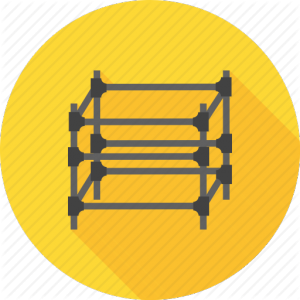Scaffold, Break it down to Build it up

I've been teaching Information Literacy in classrooms as a Research and Instructional librarian for almost 4 full school years at this point. My class sessions look a lot different now than they did back when I first started, however, the content hasn't changed that much.
What does that even mean?
Well, for one, the structure is completely different. During my first year, I always struggled to get all the content in to a 50 minute session. Now, I'm typically about 5 minutes ahead, and that's after giving the instructor 5 minutes at the beginning of the session for regular housekeeping, roll-call, etc.
Scaffolding is important, because it allows me to differentiate my instruction AFTER the fact and allows on the fly assessment of where my students are at, and where I need to head during the session, and then when we are doing our follow-up work day, I'll know how to differentiate instruction on an individual basis. I used to think "writing this kind of stuff is a serious curriculum matter" and now, I can typically do it through the instruction itself.
For example:
THEN: I used to always ask "where do you start a research project?" and the response is always "Google" so I would say "yes, and I'm going to teach you a BETTER tool" and jump right into my spiel.
NOW: I ask the same question, and once they say "Google," I affirm them "YES, exactly, fantastic" and then I ask "do you know how a Google search works?" which they never do. So I take about 90 seconds to explain the very basics of how a search engine such as Google indexes webpages and content on the internet.
Sounds like your just teaching them more stuff
The point of this is because I'm adding a couple layers of scaffolding to the instruction, without the student even realizing it. One: the student now has a basic understanding of a tool they use every day and are going to use moving forward. Two: They now have a point of comparison with the tool I'm about to show them, so when I explain what makes that tool so special, they actually have a basic comparison point. And three (we hope): if he made me understand Google better, something I use every day, maybe he knows something valuable about this new tool that I don't know, too.
This usually opens them up to feedback and response. It opens them up to sharing their prior knowledge and gives them a visual example of how something that looks very similar works differently on a fundamental level.
Now, we all have some kind of footing under us moving forward. And maybe that scaffolding allows us to connect to material in a new way, and try some new things. Which is cool because we can differentiate from that point, but we have a solid point from which we all move out, instead of scattershot from the beginning.
This method is still a work in progress. Maybe in 4 more years I'll have it closer to 80% figured out.
Tools for Differentiation
Padlet
I use this in all my classes. Great for student feedback, visual aids, and real-time question/response
Backchannel Chat
Like Twitter, but for your classroom. You have complete control and can even print out transcripts.
Kahoot!
Everyone loves it for a reason. Makes assessment so easy.
Leave a Reply